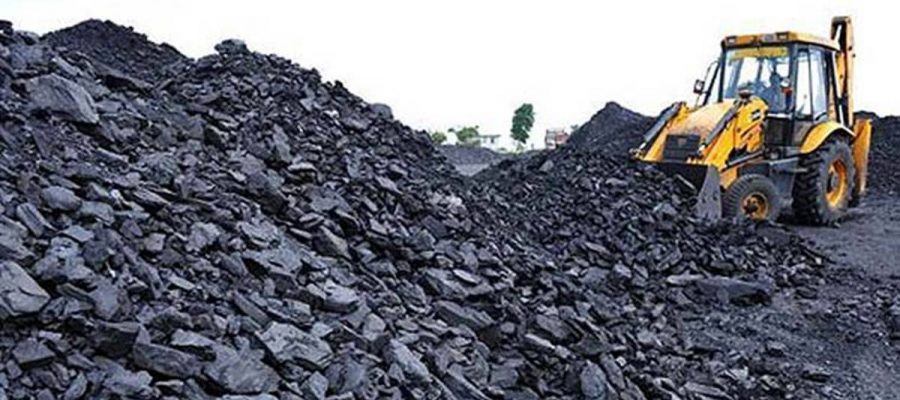Centre, state, miners and power companies must plan to ensure there is no mismatch in demand and supply of coal
The coal crisis brings a sense of déjà vu as the storyline seems similar to what happens when there is a shortage of sugar or onions. The difference is that the shortage of farm products is normally due to crop failure while the reasons for coal shortage are more human-made.
India has the world’s fifth-largest coal reserves. Theoretically, therefore, there is no physical shortage as we can mine as much as we want to. For this to happen, miners, which includes Coal India, must invest more money in coal production. During the monsoon season, rains do not just stop the mining process but can also affect coal stocks – this is somewhat like the excess grains problem.
Today, while the government has been saying that the supplies are at their highest, the power-generating companies are complaining that their stocks are low. Normally, they maintain around 30 days of inventory, but, currently, this has come down to three days. Such shortages invariably lead to outages, some of which are already being witnessed in some pockets of the country. Several states say that they are running out of coal. Will this situation get reversed? Probably conditions will improve with time, but one does not know when. Demand surges and disruption in supplies can exacerbate the issue.
On the supply side, because of low investment, coal cannot be mined more than the capacity which exists today. Hence, the increase in supplies will be gradual. Ideally, just like we import sugar or onion when there is a shortage, we should import more coal. But that has its challenges.
In terms of demand, producers should have sprung into action when stocks were getting depleted and not waited till the crisis to flag the issue. Ideally, if supplies were not available, provision for imports should have been made. Now, the government is asking companies to meet 10 per cent of their requirement through imports.
The global coal crisis has led to higher prices. Here, too, a sudden resurgence in demand after the pandemic has exposed the supply limitations. During the first lockdown, mines closed or operated with limited capacity as the offtake was limited. Now with a resurgence in demand, time lags are involved, which, in turn, have pushed up prices. The international price has gone up by almost 40 per cent in the last month. China – a major producer and consumer – has also faced this problem as it has tried to save coal for the future and imposed restrictions on mining to go green. At the global level, as power companies are not getting coal easily, they have switched over to oil, pushing up the price of Brent.
Ideology has a big role to play in this crisis. In India, coal imports have been traditionally high. Under its atmanirbharta drive, the government has voiced concerns on this issue and asked generators to be more self-reliant. Coal dependency came down over time, which also coincided with a lower phase of economic growth. The same has happened in China where the government has taken the greening concept seriously and asked coal producers to control production and power generators and move over to other greener fuels. This has made coal producers less willing to increase investment.
Ideally, power companies should import coal. But that increases the cost of power production and power tariffs cannot be revised easily, like in the case of crops. It is often asked that if the government can keep raising the price of petrol and diesel when crude oil prices go up, why isn’t a similar policy followed for power. The power sector, however, already has its woes. Distribution companies have been running losses due to their inability to cut down on transmission losses or increase tariffs. As their losses mount, the amount overdue to the generators increases. Therefore, the producers are not willing to increase their costs.
What could be the impact on the economy if this crisis gets prolonged? The economy has been showing signs of recovering and the October-December period is crucial because there are expectations of pent-up demand helping to accelerate growth. Any disruption in the power supply can push back this process.
The challenge is that today all the three sectors, agriculture, industry and households, are equally important. The rabi sowing is about to start and power is required to drive the sowing efforts. For industry, production requires uninterrupted supplies. A lot of business is being conducted from home after the pandemic, and power disruptions will come in the way of work.
Inflation too is delicately placed, though the situation currently looks comfortable due to the high base effect – this could help in the next two months. The prices of vegetables have started increasing and edible oils continue to be a pain point in the inflation schedule. If power companies start revising their tariffs, inflation will shoot up.
The coal shortage problem is very serious as it affects power supply, which is the backbone of all economic activity. It could surface again especially because the country is in a transition phase. There is much talk of reducing the carbon imprint – using less coal and shifting to renewables. Mismatches can surface, especially after the monsoon, and have chaotic effects. All stakeholders – the Centre, states, miners and power generators – must work together and plan the strategy going ahead. The nation is expected to grow by more than 8 per cent in the next few years, and we need to have a strong power generation edifice for the same.
Sabnavis is an independent economist and author of Hits and Misses: The Indian Banking Story
Source: Read Full Article



